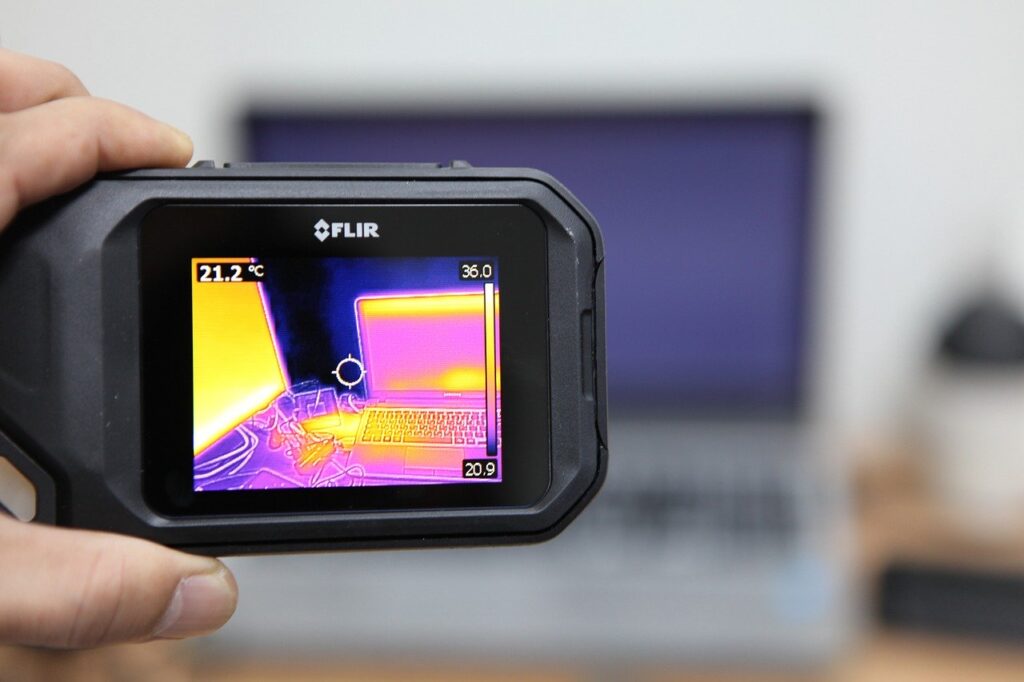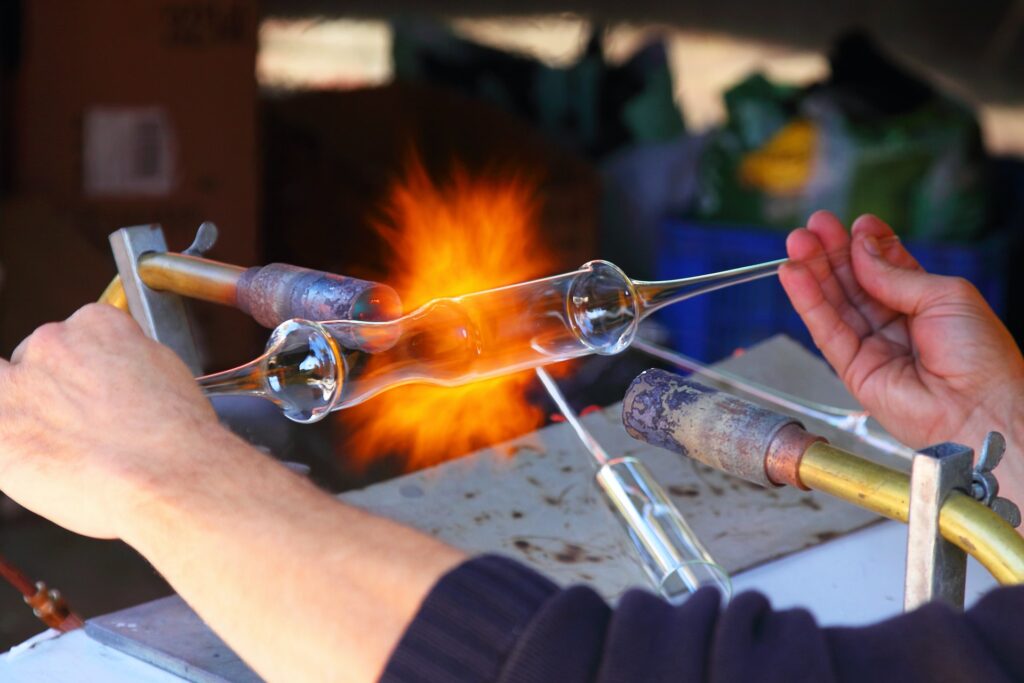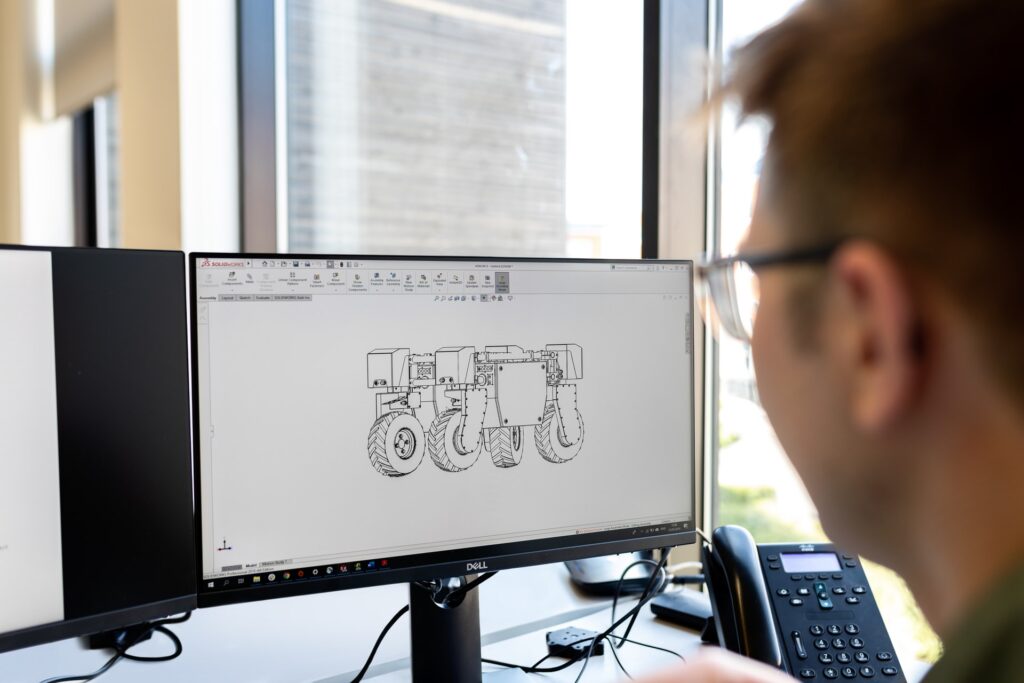Mechanical vs Thermal engineering, one makes things move and one make things hot, right? Read on to see if this statement is true and learn the similarities between these two engineering disciplines.
Mechanical vs Thermal Engineering
Mechanical Engineering
Mechanical engineering is among the most diversified of the traditional engineering disciplines. Mechanical engineers build and design devices and machines that allow humans to work and live in space, in the air, on the ground, and under water. Their machines can extend our physical capabilities, improve our health and standard of living, and impact the environment in which we live.
Mechanical engineers play key roles in a wide range of industries including automotive, aerospace, biotechnology, computers, electronics, micro-electromechanical systems, energy conversion, robotics and automation, and manufacturing. The American Society of Mechanical Engineers (ASME) currently lists 36 technical divisions, from advanced energy systems and aerospace engineering to solid-waste engineering and textile engineering.
Mechanical engineering education empowers students with creative thinking skills to design an exciting product or system; analytical tools to achieve their design goals; the ability to overcome all constraints; and the teamwork needed to design, market, and produce a system. These valuable skills can be applied to launch careers in many other fields, such as medicine, consulting, law, management, banking, and finance.
Thermal Engineering
Thermal engineering is a specialized sub-discipline of mechanical engineering and chemical engineering that deals with the movement of heat energy and transfer. The energy can be transformed between two mediums or transferred into other forms of energy. A thermal engineer will have knowledge of thermodynamics and the process to convert generated energy from thermal sources into mechanical, chemical, or electrical energy. Many process plants use a wide variety of machines that utilize components that use heat transfer in some way. Many plants use heat exchangers in their operations.

Thermal engineers must have an understanding of economics and the components that they will be servicing or interacting with. Some components that a thermal engineer could work with include heat sinks, heat exchangers, bi-metals strips, radiators and many more. Some systems that require a thermal engineer include; Boilers, water pumps, heat pumps, engines, and more.
Though most universities in the United States do not offer formal degrees in thermal engineering, most candidates find employment with a bachelor’s degree in mechanical engineering. This is the level of education that is required by employers in the industry. In this course of study, students complete coursework in thermodynamics, computer science and kinetics.
Mechanical vs Thermal Engineering Education
Mechanical Engineering
Mechanical engineers typically need a bachelor’s degree in mechanical engineering or mechanical engineering technology. Mechanical engineering programs usually include courses in mathematics and life and physical sciences, as well as engineering and design. Mechanical engineering technology programs focus less on theory and more on the practical application of engineering principles. They may emphasize internships and co-ops to prepare students for work in industry.
Some colleges and universities offer 5-year programs that allow students to obtain both a bachelor’s and a master’s degree. Some 5-year or even 6-year cooperative plans combine classroom study with practical work, enabling students to gain valuable experience and earn money to finance part of their education.
ABET accredits programs in engineering and engineering technology. Most employers prefer to hire students from an accredited program. A degree from an ABET-accredited program is usually necessary to become a licensed professional engineer.
Licensure is not required for entry-level positions as a mechanical engineer. A Professional Engineering (PE) license, which allows for higher levels of leadership and independence, can be acquired later in one’s career. Licensed engineers are called professional engineers (PEs). A PE can oversee the work of other engineers, sign off on projects, and provide services directly to the public.

Thermal Engineering
Heat transfer graduate certificate programs that provide training in the thermal field take one semester to complete and do not require the completion of a final project. Professionals and graduates of undergraduate programs in math, engineering or a related field can apply.
Heat transfer graduate certificate programs are run through mechanical engineering departments. Students learn about fluid dynamics and how to design technical systems applicable to life support in outer space. Coursework provides students with an overview of computer modeling, thermodynamics and thermal management as applied to electronics. Commonly offered courses include:
- Advanced mathematics
- Convection heat transfer
- Fluid dynamics
- Gas dynamics
- Numerical methods
- Thermal stress analysis
Concentrations in thermal sciences are commonly available through graduate programs in mechanical engineering. Students explore thermal radiation, thermodynamics, fluid technology and state-specific thermal equilibrium laws. Because of the cross-disciplinary nature of heat engineering and its applications, collaboration with researchers in disciplines such as aerospace or chemical engineering is common.
Graduate coursework in heat transfer and fluid mechanics trains students to create computational models and design smart materials that bend in response to changing temperatures. Topics of study include:
- Computer-aided engineering
- Convection processes
- Engineering analysis
- Fluid dynamics
- Solids mechanics
Mechanical vs Thermal Engineering Careers
Mechanical Engineering
Since mechanical engineering is a very broad field, they work in a variety of different industries designing a wide range of products. Most mechanical engineers work in manufacturing, research and development, or at companies that offer engineering services.
Mechanical engineers generally specialize in one area of engineering. For example, they may work with aircraft engines or with commercial refrigeration equipment. Other fields of specialty include fluid power, instrumentation, and bio-engineering. Some work in a particular industry, such as petroleum or plastics.
Within each branch of mechanical engineering there are specific jobs. Some engineers design products. They must determine the needs of the user, the physical problems of building the equipment, the cost of the equipment, and its effect on the environment. Other mechanical engineers supervise the production and installation Most mechanical engineers work for manufacturing companies that make primary and fabricated materials, machinery, and electrical and transportation equipment. They generally take care of equipment or are in charge of its maintenance and operation. Still other mechanical engineers are involved in sales, research and development, or teaching at the university level. Mechanical engineers also work as administrators and as consultants.
Mechanical engineers are employed throughout the United States. Three-fourths of them work in manufacturing, chiefly for companies that make primary and fabricated materials, machinery, and electrical and transportation equipment. Others work for government agencies, colleges and universities, and consulting firms.
Thermal Engineering
According to the U.S. Bureau of Labor Statistics (BLS), materials engineers were forecast to see little to no change in job growth from 2018-2028, and mechanical engineers are expected to have a 4%, or average, increase over the same period. According to the BLS, the mean annual wage of mechanical engineers was $92,800 in May 2018, while materials engineers reportedly earned an annual mean wage of $96,930.

Part of being a thermal engineer is to improve a current system and make it more efficient than the current system. Many industries employ thermal engineers, some main ones are commercial construction, automotive manufacturing industry, and the Heating, Ventilation and Cooling industry. Job opportunities for a thermal engineer are very broad and promising.
Thermal engineers are not limited in areas of specialization and can work in numerous fields. Some areas that a thermal engineer can work in include but are not limited to:
- Heating, Ventilation and Air Conditioning (HVAC) systems in small and large-scale residential, commercial or industrial buildings.
- Renewable energy systems.
- Military and defence equipment.
- Electronics and electrical components and systems.
- Aerospace components.
- Boiler, heat exchanger, and pump design, amongst others.
Mechanical vs Thermal Engineering Job Description
Mechanical Engineer
Mechanical engineers perform engineering duties in planning and designing tools, engines, machines, and other mechanically functioning equipment. Oversee installation, operation, maintenance, and repair of such equipment as centralized heat, gas, water, and steam systems.
Some job responsibilities of a mechanical engineer include:
- Confer with engineers and other personnel to implement operating procedures, resolve system malfunctions, and provide technical information
- Investigate equipment failures and difficulties to diagnose faulty operation, and to make recommendations to maintenance crew
- Research and analyze customer design proposals, specifications, manuals, and other data to evaluate the feasibility, cost, and maintenance requirements of designs or applications
- Read and interpret blueprints, technical drawings, schematics, and computer-generated reports
- Research, design, evaluate, install, operate, and maintain mechanical products, equipment, systems and processes to meet requirements, applying knowledge of engineering principles
- Specify system components or direct modification of products to ensure conformance with engineering design and performance specifications

Thermal Engineer
As a thermal engineer, you create, maintain, or repair mechanical systems that involve a heat transfer process into other forms of energy. You analyze how mechanical heat sources interact with different physical and industrial systems. You test various components of heat transfer within a system, which sometimes involves chemical fluids and gas. You may work with large or small-scale heating or cooling equipment, from industrial heaters to airplane engines.
Some job responsibilities of a thermal engineer include:
- Design thermal test set-ups and execute testing programs
- Lead the knowledge development of integrated thermal solutions for hybrid and electric vehicles
- Manage customers, suppliers and sub-contractors of thermal management solutions to schedule and technical performance
- Manage suppliers/subcontractors to develop specifications and solutions
- Manage a project team consisting of system engineers, development engineers, CAE engineers and CAD engineers to deliver a successful vehicle thermal solution to the customer
- Support of proposals contributing conceptual thermal designs, costs & performance estimates
- Thermal modeling of electronic systems and thermal management solutions using FEA, CFD, and analyzes based on first principles
If you have anything to add, please feel free to leave a comment down below, and sign up to our newsletter for more of the same content!


